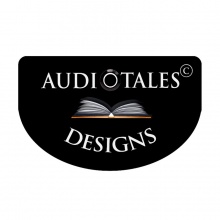Audiotales Designs 1951 Mastering Equalizer by poppaflavor

Wow. What to say? It's such a simple device in concept... A 2 band (boost only), 2 filter tube EQ based on classic designs. But it is incredibly complex and flexible from the novel features AudioTales has created.
There is a output gain decrement knob to cut the volume after introducing any boosts.
There is a LPF (3dB/Oct) to deharsh and a HPF (6dB/Oct) to de-boom. Of course these can be used synergistically with the low and high boost to bloom the lows or highs while cutting the extremes of these ranges. In practice, the LPF and HPF are very gentle and useful. I most often do not employ them, but when the situation calls for it, it is very helpful to have the filters on board.
The low and high bands both have 6 switched frequencies.
The low band has frequencies from 20hz to 150 hz, the high band from 6khz to 51khz. So, the bands in no way overlap, which is where the AudioTales 1954 passive mid range EQ would fill the gap.
The low band has a novel feature called "Barytone" (baritone, get it?). This is a three way toggle switch that introduces frequency response curve shaping *beyond what you set in the EQ band* through inductance or capacitance... or takes these out to keep it true to your settings on the low band. In addition to the toggle, there is a knob that allows you to dial in how much impact you want... basically a wet/dry for the Barytone toggle. Inductive mode is like a reverse version of Pultec, and can be taken to the extreme. It blooms lows while cutting very low frequencies. Capacitive mode is shelfy and blooms the lows. When dialed in it goes from shelf to Bax-esque shelf to a bell-like low band. It's hard to describe, but really easy to hear in the online examples (Youtube) and in practice. This effectively makes that single low band into like 3 low band "shapes" and provides a great flexibility.
The high band has two shelf formats... A traditional shelf and a smoother Bax shelf. Also, there is a novel feature called AirCap which does two things- It shifts the inflection of the shelf to lower frequencies (whether traditional or Bax) and also introduces a sweetness to the sound. A gentle airy lift that isn't harsh. Like for the Barytone on the low band, the AirCap toggle has what is basically a wet/dry dial to allow for the AirCap effect to be modulated. So, with traditional or Bax shelf + AirCap it is a very flexible "single band".
In practice the knobs are detented appropriately. It is easy to reproduce a setting. The sound is incredible. Even the boxtone is luscious. Pushing the high band, setting it to a smooth Bax shelf and then dialing in the AirCap produces the most lovely highs. I've taken frequency sweeps up to 96kHz and the high band does indeed boost up to 51kHz(!). The low band is full, thiccalicious but not overtly boomy or boxy. Even though it does not have mid-frequency bands, if the Low is set to 150hz and the high is set to 6k hz and the HPF/LPF filters are engaged with the Barytone on inductive mode and AirCap on there is a wonderful bloom in the upper mids and lower mids. Quite unique!
All in all, the AudioTales 1951 is an deceptively flexible and incredibly powerful 2 band EQ that operates and offers SO much more than a traditional 2 band EQ. Highly recommended.
The device pairs with the AudioTales 1954 passive midrange EQ, and it performs marvelously in that duet. The 1951 alone is highly recommended, but if you can get the 1951+1954 combo it will be a incredibly powerful duo. I'll review the 1954 separately, since the GS forum doesn't seem to allow for dual device reviews.








